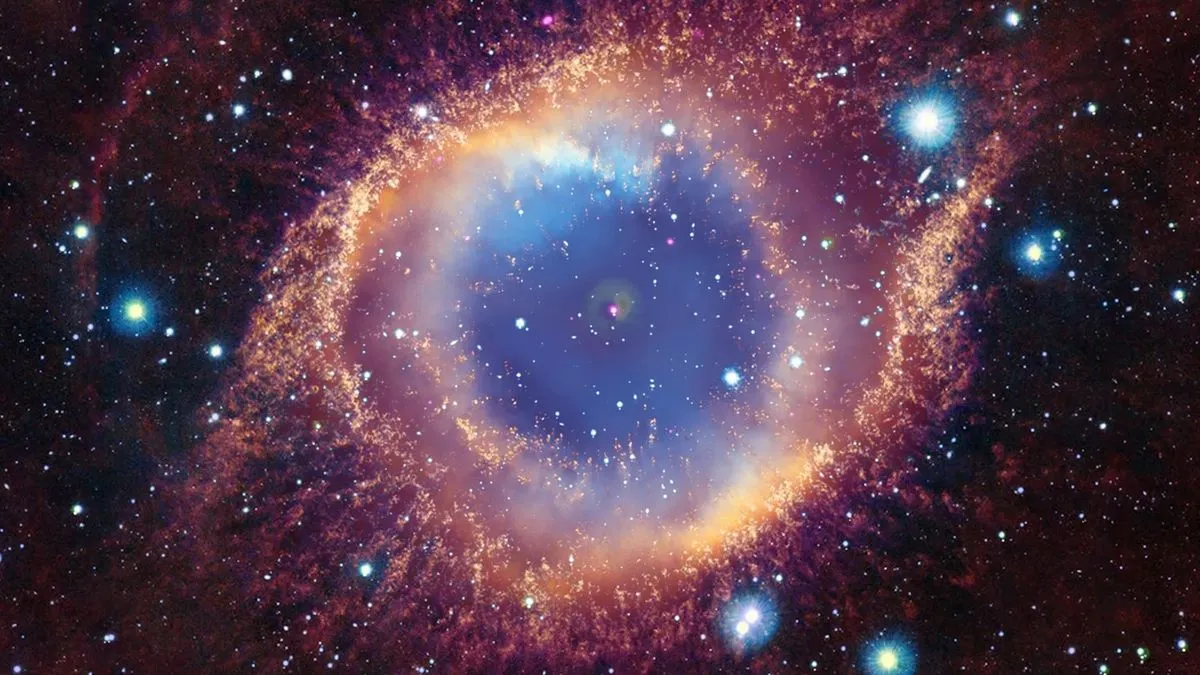
A recent analysis utilizing advanced X-ray technology has unveiled fascinating details about the Helix Nebula, often referred to as Caldwell 63. This stunning nebula, located approximately 650 million light-years away from Earth, is the remnant of a dying star that is shedding its outer layers into the surrounding cosmos. According to NASA, the stellar radiation emitted by this nebula causes it to glow, forming a gigantic ring that spans about 3 light-years in diameter.
In this groundbreaking study, researchers combined X-ray emissions detected by NASA's Chandra X-ray Observatory with visible light data from the Hubble Space Telescope. Additionally, infrared observations from the European Southern Observatory's Visible and Infrared Survey Telescope for Astronomy and ultraviolet light captured by NASA's Galaxy Evolution Explorer were integrated into this comprehensive analysis. This broad-spectrum approach revealed critical insights into the remnants of the dying white dwarf star responsible for creating the Helix Nebula.
One of the most intriguing findings suggests that the dying white dwarf may have consumed an orbiting planet that ventured too close to its fading sun. The tidal forces exerted by this white dwarf appear to have torn the nearby planet apart, subsequently pulling its remnants onto the white dwarf's surface. This process has triggered powerful X-ray flares, shedding light on the violent interactions occurring within the nebula.
As a reminder, our own sun is destined to meet a similar fate as a white dwarf. This stage is the final phase for medium-mass stars that have exhausted their nuclear fuel. Over time, white dwarfs gradually dim and cool, ultimately fading from existence. In the case of the Helix Nebula, the central star is actively ejecting hot gas into space, which then cools and falls back toward the star. This dynamic interaction creates intricate, knot-like patterns that can resemble comets, resulting in a visually captivating cosmic landscape.
In December 2024, a research team led by Sandino Estrada-Dorado, an astrophysicist at the National Autonomous University of Mexico, published findings in the journal Monthly Notices of the Royal Astronomical Society. Their study posits that the unexplained X-ray emissions detected from the Helix Nebula are likely due to materials from a substellar donor companion falling into the dying star. Unlike conventional stars, substellar objects, including brown dwarfs (often referred to as failed stars) and remnants of former stars and planets, do not undergo hydrogen fusion.
The revelations from the Helix Nebula provide profound insights into the life cycle of stars and the potential dangers posed to orbiting planets. As we continue to explore the cosmos, studies like these underscore the dynamic and often violent nature of stellar evolution, enhancing our understanding of the universe.